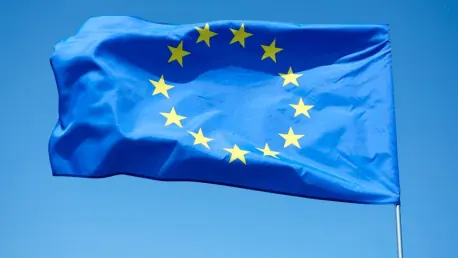The European Union, boasting a massive market of 450 million consumers and 23 million companies, has the potential to drive substantial technological innovation. However, despite the existence of extensive regulations aimed at enhancing cross-border business within the EU, the digital sector continues to face numerous challenges. These impediments have hindered the realization of a truly integrated Digital Single Market, making it difficult for Europe to fully leverage its market size and consumer base. Addressing these market gaps could be crucial in fostering tech innovation and ensuring the EU remains competitive on the global stage.
Persistent Fragmentation of the Digital Single Market
Even though the Single Market was established over thirty years ago, various barriers still undermine its effectiveness, particularly in the digital sector. The European University Institute (EUI) has documented how inconsistent regulatory environments across different Member States perpetuate this fragmentation. For instance, disparities in value-added tax (VAT) systems, delivery costs, and product labeling requirements create significant obstacles for European merchants. These inconsistencies not only complicate the business landscape but also hinder merchants’ ability to scale and innovate.
Moreover, countries often diverge in the way they implement EU regulations, exacerbating these problems. The enforcement of laws under the EU’s Digital Single Market Strategy, especially those introduced since 2014, remains inconsistent and fragmented. As a result, businesses still face considerable challenges when engaging in cross-border e-commerce. Addressing these issues is paramount for creating a cohesive digital environment where tech innovation can thrive. The study highlights that despite numerous regulations aimed at facilitating cross-border business, a truly integrated Digital Single Market has yet to be achieved.
Divergent National Regulations and Innovation Stifling
Member States’ propensity to impose divergent restrictions is another major issue impacting tech firms’ market scalability and innovation within the EU. This divergence becomes particularly evident when Member States transpose critical EU legislation, such as the Digital Services Act and the Data Act, into national laws. Each country’s unique interpretation and implementation of these laws can create uneven playing fields, further complicating the business environment for tech companies. The push for country-specific technical standards also contributes significantly to market fragmentation.
The findings from the EUI study indicate an increase in the number of e-merchants dealing with cross-border issues, suggesting an urgent need for the European Commission to enforce compliance more robustly. Member States must be held accountable for actions that weaken the Single Market and stifle innovation. By reducing regulatory discrepancies and streamlining legislative frameworks across borders, the EU can foster a more integrated market conducive to tech growth and development. A cohesive regulatory environment is essential for harnessing the full potential of the EU’s digital ecosystem.
The Problem of Over-Regulation
Over-regulation has been identified as a significant barrier to technological advancement within the EU. Policymakers’ proactive approach towards regulating emerging technologies often stifles innovation rather than promoting it. Influenced by competitive pressures from digital powerhouses like the US and China, the EU’s tendency to introduce numerous prescriptive regulations can be counterproductive. This over-regulation not only burdens businesses with compliance costs but also stifles the agility and innovation necessary for technological growth.
Introducing a plethora of new laws has had minimal impact on resolving core issues within the Single Market, as per the EUI study. Instead, it suggests a cautious, deliberative approach to regulatory intervention. Policymakers should consider the long-term impact of their actions on the digital sector and prioritize reforms that support innovation rather than hinder it. A balanced approach to regulation, which encourages competition and innovation while ensuring consumer protection, is crucial for the EU’s digital future. By addressing the root causes of market friction, the EU can create a more business-friendly environment.
Targeted Regulatory Reforms
Opposition to over-regulation doesn’t imply rejecting all regulatory measures. A targeted regulatory approach is essential to address specific market failures and enhance competitiveness where existing tools fall short. One notable example is the patent system, particularly concerning standard essential patents (SEPs). Meaningful reforms in this area are crucial for fostering innovation. Despite evidence of abuse and prolonged inaction on issues like automatic injunctions, the recent shelving of SEP legislation by the Commission is seen as a step back.
Such decisions are criticized for hindering innovation and protecting patent trolls rather than promoting technological progress. Legislative adjustments are necessary to discourage abusive practices and support technological advancements. Streamlined and harmonized regulations focused on actual impediments can create a more integrated and seamless Digital Single Market. The aim should be to foster an environment where innovation flourishes, free from unnecessary regulatory burdens. By correctly identifying and addressing genuine market failures, the EU can pave the way for substantial technological growth.
Streamlining and Harmonizing Regulations
The key to fostering technological innovation in Europe lies in harmonizing existing regulations and reducing inter-country friction. Streamlined regulations and proper enforcement of compliance can significantly create a more seamless and competitive environment. The EUI study suggests that EU legislators should slow the pace of introducing new regulations, allowing businesses and Member States the time to effectively implement existing rules. This approach could lead to a more integrated Digital Single Market, where businesses can operate more freely across borders.
By focusing on harmonization rather than adding new layers of complexity, the EU can reduce regulatory fragmentation and create a more consistent digital landscape. Proper enforcement of compliance is also crucial to ensure that Member States adhere to the unified set of rules, minimizing discrepancies and promoting a fair competitive environment. Such measures are essential for creating a single market conducive to innovation and growth. A well-integrated market will enable European tech firms to compete more effectively on the global stage.
Evaluating Trade Barriers and Compliance
The European Union, with its massive market comprising 450 million consumers and 23 million companies, holds significant potential for driving technological innovation. Despite extensive regulations intended to facilitate cross-border business within the EU, the digital sector still faces a range of challenges. These hurdles have obstructed the creation of a truly integrated Digital Single Market, limiting Europe’s ability to fully capitalize on its vast market size and diverse consumer base. Tackling these barriers is vital for fostering tech innovation and maintaining the EU’s competitiveness on the global stage. Resolving these issues could spur significant advancements in technology, benefiting both businesses and consumers. By harmonizing digital regulations and removing existing obstacles, the European Union can enhance its position as a global leader in technology. Therefore, the focus on overcoming these digital challenges is essential for the EU to utilize its full potential and stay ahead internationally. Addressing market gaps will be crucial for the EU’s continued success.









